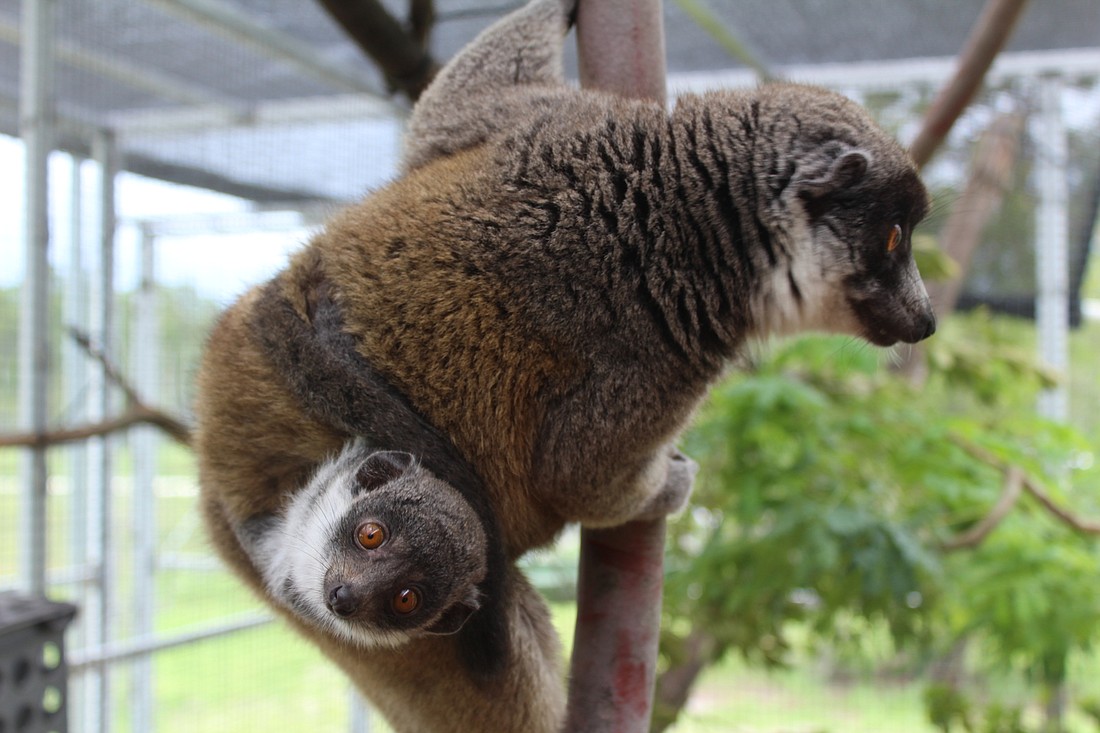- April 4, 2025
-
-
Loading

Loading

After experiencing a baby boom, the Myakka City Lemur Reserve is undergoing an expansion at the perfect time.
Four lemurs were born in 2016, and since the opening in 1997, the reserve has grown the colony from 10 lemurs to 56.
Now the reserve is expanding to give its lemurs more space.
“We are hoping that the third forest (the reserve already has two forest areas) can become the bachelor pad,” said Alison Grand, the executive director of the Myakka City Lemur Reserve. “We would like to pull (males and females) out of their groups during breeding season and put them all in their own forest habitat.”
With 120 acres, including 20 acres of forest, the Myakka City Lemur Reserve has the space to expand, it has just needed the cash.
“We have a lot of property to develop,” Grand said. “The idea is the colony grows as we add forest areas and shelters to be able to keep up with the growth. We know we want to continue the breeding program and bring new animals into the colony, and we are going to need more space to do that.”
Last year, in response to the growth of its lemur colony, the Lemur Conservation Foundation kicked off a $2.2 million, three-year campaign to raise funds for expansion. It has raised just more than $1.1 million so far.
Key projects include the Elizabeth Moore Lemur Forest, a maintenance workshop, the nonprofit’s third lemur shelter and a new clinic and quarantine building. Of the $2.2 million goal, $900,000 is intended to pay for operation costs over a three-year period.
The clinic and quarantine building are essential to properly care for the expanding lemur population, Grand said.
“Right now, we are not able to bring in new or sick animals (to the reserve),” Grand said.
Construction on the expansion projects will begin immediately, or as soon the rain lets up.
The workshop will be a priority.
“We used to have a workshop house on Wauchula Road, but we sold it so we could buy housing on our property,” Grand said. “Now all of our stuff is stored in a pod and in enclosures, and sometimes in our main office, until we get the new workshop built.”
The reserve’s board has been discussing expansion on the 120-acre property since 2006.
“We’ve outgrown the facility,” Grand said. “We have been able to function well with what we have, but we are at the point where if we want to continue to grow the colony, which is the whole point of what we are doing, then we need to expand.”
Grand said the tricky thing about lemurs is they need to be separated into groups. The reserve can’t simply put a ring-tailed lemur and a mongoose lemur in the same enclosure or even in the same forest. With the breeding program going so well, the need for expansion became critical.
“We have two options, either to stop breeding, which doesn’t help the program, or we expand in order to continue our mission here, “ Grand said.
“They aren’t using the full 13 acres, so we know we can split this and give them two separate habitats that are bigger than the area that they utilize already,” Grand said. “The habitat will be smaller, but will still be more space than they are using now.”
Among the construction items are new pathways from the forest to the shelters. Grand said those paths benefit both the lemurs and the staff members.
“With the aerial pathways connecting forests and buildings, it will give the staff and the lemurs a lot of flexibility,” Grand said. “If they want to go inside for some air conditioning, they can, and if they want to go into the forest and jump tree-to-tree they can do that, too.”
Grand loves to check out the lemurs at night to see if they decide to sleep in their forest.
“You can see them sleeping at the tippy tops of the trees,” Grand said. “We will see big lemur balls — a huddle of a family or group — that sleep together on the tiniest little branch. They are usually all waiting for us in the morning for breakfast, though.”
“That’s the beauty of our whole facility,” said Penelope Bodry-Sanders, the founder of Myakka City Lemur Reserve. “The animals can choose where they want to be and when they want to be there.”
The reserve is most importantly a research facility, so the forest habitat is critical.
“No matter what you do to try to stimulate natural behavior, it can’t ever possibly match all the stimulation that they have in the forest environment,” Grand said. “Their minds are instantly activated when they are out there. They see bugs, squirrels, and they constantly have to think about the best way to get from point A to point B, where to sleep at night, which direction they should go in.”
Bodry-Sanders is excited the expansion is about to begin.
“We desperately need to expand,” she said. “There are situations where we are offered lemurs that need to be bred and we simply do not have the space. It has become critical for us in order to continue our work and save more lemurs.”